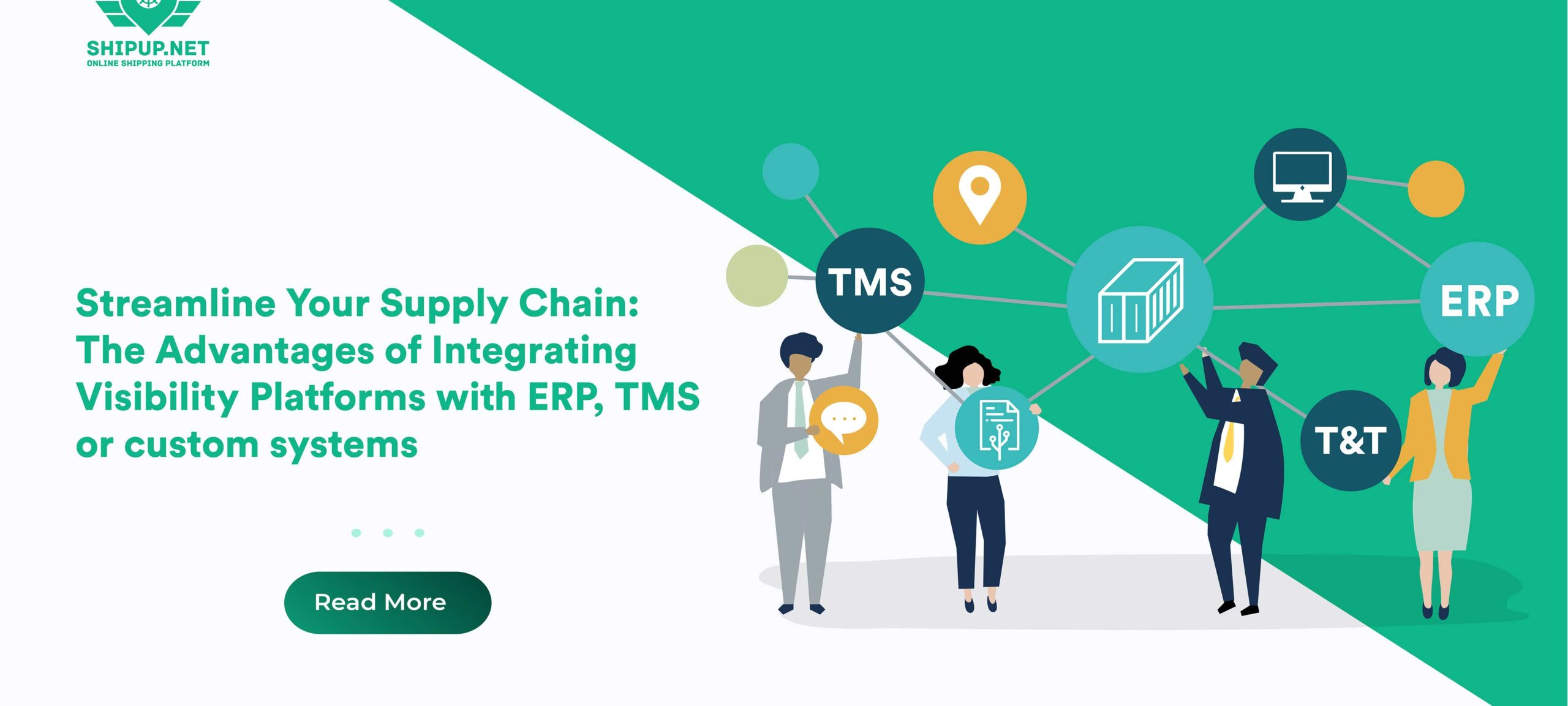While integrating a shipment visibility platform can bring many benefits, there are also some challenges to be aware of. As an example, some businesses may struggle with the technical aspects of integration. It is a common thought that integration takes a long time and it needs a lot of technical expertise. Or some may face resistance from employees who are used to working with a different system. Of course, at the beginning, everybody thinks that everything is going to change and it is scary for employees who don’t want new headaches. However, with the right planning and preparation, these challenges can be overcome.
For example, involving employees in the integration process and providing training on the new platform can help them come up with new changes. They should learn everything to start working confidently.
It’s also important to carefully plan the integration process, including mapping out the steps and considering technical considerations such as compatibility and data security. With a good planning and preparation, companies can successfully integrate a shipment visibility platform and achieve their supply chain goals after a short time.
What Systems can be integrated with Shipment Visibility Platforms?
Shipment visibility is a crucial aspect of supply chain management, as it allows companies to track the movement of goods from origin to destination. With the increasing complexity of global logistics operations, the use of a shipment visibility platform has become essential to ensure efficient and effective supply chain management.
These platforms can be integrated with various logistics systems, such as transportation management systems (TMS), warehouse management systems (WMS), enterprise resource planning (ERP) systems, customer relationship management (CRM) systems, and global trade management (GTM) systems. This integration provides end-to-end visibility into the entire supply chain and helps companies make informed decisions to optimize their logistics operations.
- Transportation Management Systems (TMS):
TMS software helps companies plan, execute, and track the movement of goods from one location to another. A shipment visibility platform can integrate with TMS to provide real-time information on the location and status of shipments in transit.
- Warehouse Management Systems (WMS):
WMS software helps companies manage their warehouse operations, including inventory control, order fulfillment, and shipping. A shipment visibility platform can integrate with WMS to provide end-to-end visibility into the movement of goods within the warehouse.
- Enterprise Resource Planning (ERP) Systems:
ERP systems are integrated business software that manage core business processes such as financials, supply chain management, and human resources. A shipment visibility platform can integrate with ERP to provide a complete view of the entire supply chain, from raw materials to finished goods.
- Customer Relationship Management (CRM) Systems:
CRM software helps companies manage customer interactions and data throughout the customer lifecycle. A shipment visibility platform can integrate with CRM to provide customer-specific information, such as delivery updates and delivery history.
- Global Trade Management (GTM) Systems:
GTM software helps companies manage the complexities of global trade, including trade compliance, customs declaration, and duty optimization. A shipment visibility platform can integrate with GTM to provide real-time information on customs clearance, duties, and taxes.
By integrating with these different systems, a shipment visibility platform can provide a comprehensive view of the supply chain and help companies make informed decisions to optimize their logistics operations.
Integrating a Shipment Visibility Platform: Key Steps and Considerations
So, what exactly is a shipment visibility platform? Put simply, it’s a tool that helps businesses track their shipments from start to finish. It provides real-time updates on the status of shipments, so businesses can stay informed and in control. A good shipment visibility platform will have key features such as real-time tracking, proactive alerts, and detailed reporting. These features help businesses make better decisions, resolve issues faster, and improve overall supply chain efficiency.
The process of integrating a shipment visibility platform with existing logistics systems can seem daunting at first, but it’s actually not as complicated as it may seem. It typically involves a few key steps, such as preparing your systems and data, mapping out the integration process, and testing to make sure everything works as it should. During this process, it’s important to keep technical considerations in mind, such as compatibility and data security.
Choose the Best Option
When it comes to selecting a shipment visibility platform, it’s important to keep a few key factors in mind to ensure you choose the best option for your business.
First, prioritize user-friendliness and ease of use. The platform you choose should be simple for your employees to navigate, streamlining the integration process and making it easier for everyone to adapt. Additionally, make sure the platform offers real-time updates and information, which is critical for keeping customers informed and satisfied.
Second, ensure compatibility with your current systems. Choose a platform that can easily integrate with your existing logistics systems to ensure a seamless integration process and minimize any disruptions to your operations.
Maximizing Benefits with Visiwise
Are you tired of juggling multiple tools and platforms just to manage your ocean freight operations? Visiwise is here to simplify your logistics game. Our shipment visibility platform brings everything you need to manage your logistics in one place, right at your fingertips. Our comprehensive dashboard integrates advanced features and an intuitive interface, making it easier than ever to keep an eye on all your ocean freights.
We understand the importance of having all the information you need in one place, that’s why we’ve designed Visiwise to be a one-stop-shop solution. With just a few clicks, you’ll be able to see a complete overview of your logistics operations, and make informed decisions to improve supply chain efficiency.
Say goodbye to confusing interfaces and endless searching for information. With Visiwise, you’ll be able to manage your ocean freights with ease and enjoy the convenience of having all the information you need in one simple platform. Start streamlining your logistics today with Visiwise."
The platform’s user-friendly interface makes it easy for businesses to manage and track their ocean freights in real-time, ensuring that all relevant information is available at a glance. This level of convenience and simplicity can significantly improve supply chain efficiency, reducing the time and effort required to manage logistics operations and helping businesses focus on their core operations."
Ease of Integration with Visiwise
Integrating a shipment visibility platform can be a complex and technical process, but with Visiwise, it can happen easier than you think. All of the technical aspects of integration are handled by the Visiwise team, so you can focus on your core business operations.
As a seafarer, managing logistics and shipments can be a complex and challenging task. But with Visiwise, you can rest assured that every aspect of your operation will be streamlined and efficient. The platform is designed with user-friendliness in mind, ensuring a quick and seamless transition for your team. This means that they’ll be able to get the most out of the system right from the start.
But that’s not all. The Visiwise team is dedicated to ensuring your success and they provide on-boarding and training for your employees. You can have confidence in knowing that everyone is fully equipped to use the platform and ready to tackle any navigational, logistical, or shipment management challenge that comes their way. Don’t let the complexities of maritime operations weigh you down, with Visiwise, you have a solution for it all.
Visiwise offers a distinct advantage in its ability to easily integrate with a multitude of systems, including but not limited to ERM, TMS and even your self-built company’s system. With the ability to connect via API, Visiwise ensures a smooth integration into your current operations, eliminating compatibility concerns and minimizing any potential disruption to your workflow.

